In the mid-twentieth century, great changes were occurring in how Americans lived—life became less formal, there was less reliance on servants, and basements were utilized as living spaces. In 1937, Margaret Douglas Hall inherited the estate and the Halls moved from the Garden House to the mansion.
Howard chose the basement as the place to establish the Tahitian Room and Grizzly Bar. Howard used these rooms as casual places to relax with his guests. He would screen home movies in the Tahitian Room, including vacation footage from Florida and behind-the-scenes footage taken on the set of Gone with the Wind. These rooms also were a means of self-promotion for Howard and a way of boosting Cedar Rapids. Out-of-town visitors to the Tahitian Room and Grizzly Bar often commented fondly on their memories of these rooms. They gave people a visual hook that could be attached to Howard and his Cedar Rapids home. And they were fun ways for a self-made man to enjoy the fruits of his labor.
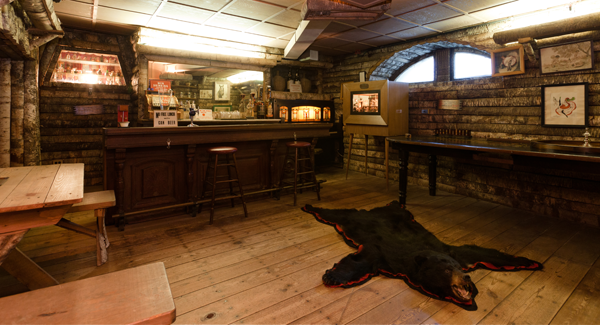
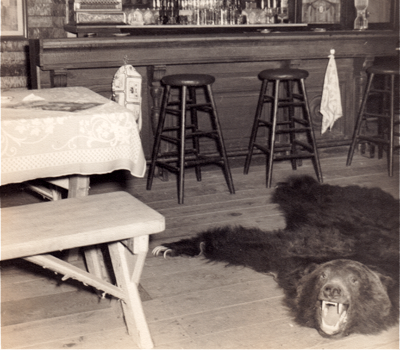
The Tahitian Room greets the visitor with a bright South Seas motif. The map on the floor shows Tahiti’s location and has a compass (with “north” illustrated). Dioramas are cut into 18” walls. The room also has a special feature: water can be circulated onto the tin roof to simulate the sound of raindrops. Visitors can hear the rain during special tours and events.
In the 1930s, bars were a popular site for male camaraderie. To facilitate this spirit in the home, bars from closed-down watering holes were installed in personal residences. Howard may also have utilized the furnishings of former gathering-spaces: the roulette table is thought to been from an old saloon out West and the bar is thought to be from a bar in downtown Cedar Rapids. The room gets its name from a grizzly bear rug that used to lie on the floor.
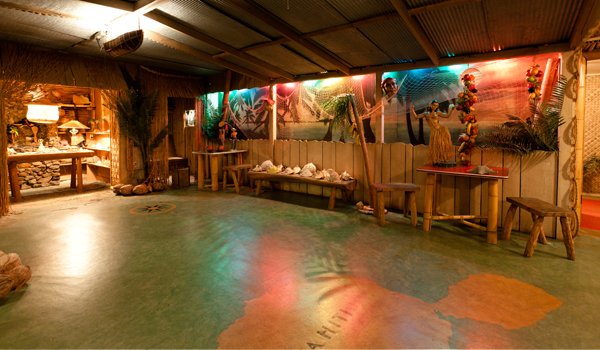
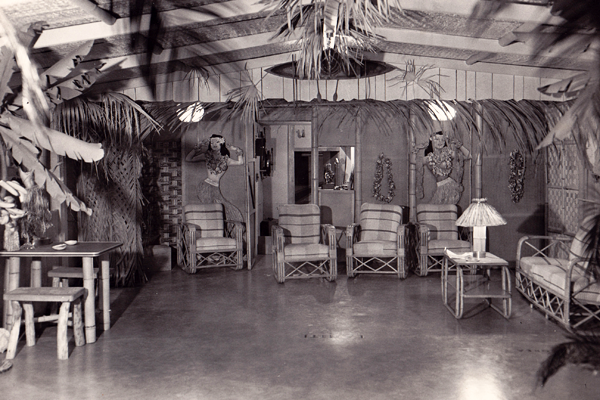
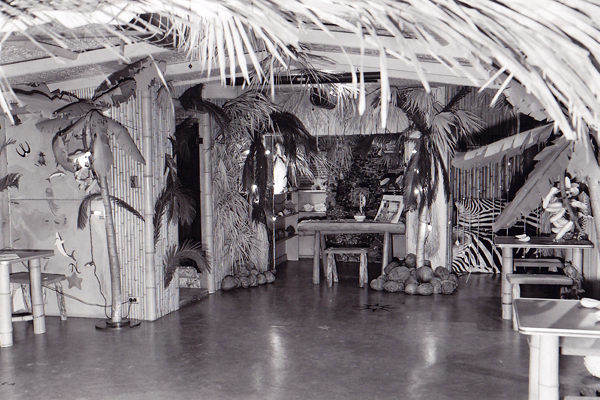
Many of the objects on display in the basement rooms were gifts from Howard’s friends. One that particularly appealed to his taste was the miniature “Duffy’s Tavern.” In a 1950 letter to Margaret he describes how it fits into his idea of decor:
“I was very thrilled when you told me about Ray Ryan’s buying the ‘Duffy’s Tavern’ for me, . . . It is really one of the cleverest things I have ever seen, and would rather have it than a nice painting, which probably shows my low-brow rating. Possibly some of my Great Grandfathers were horse thieves or bar tenders.”